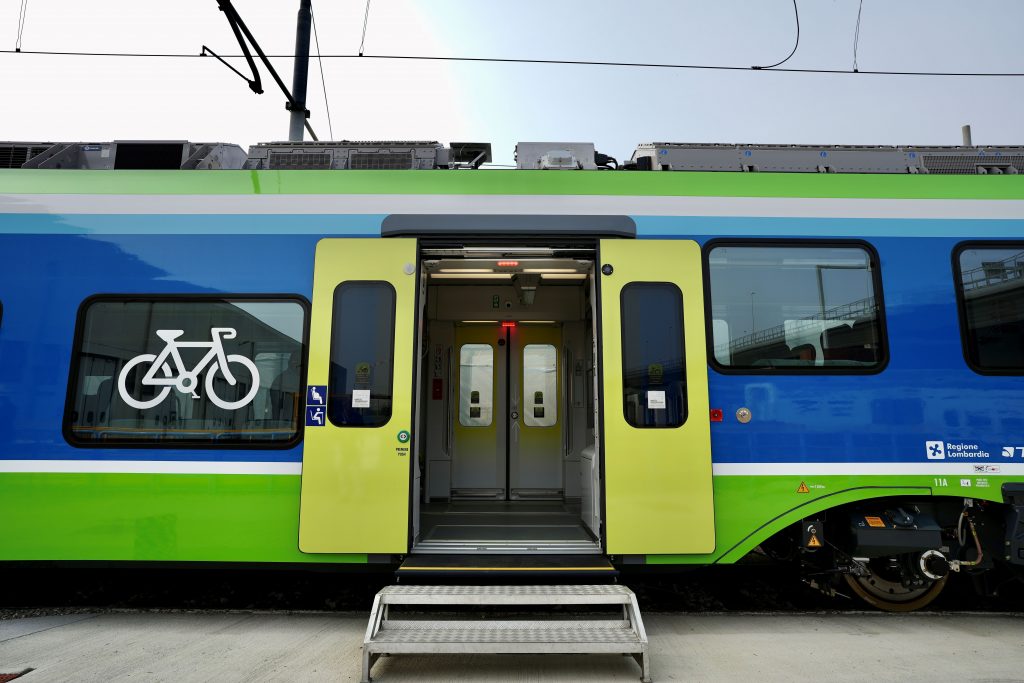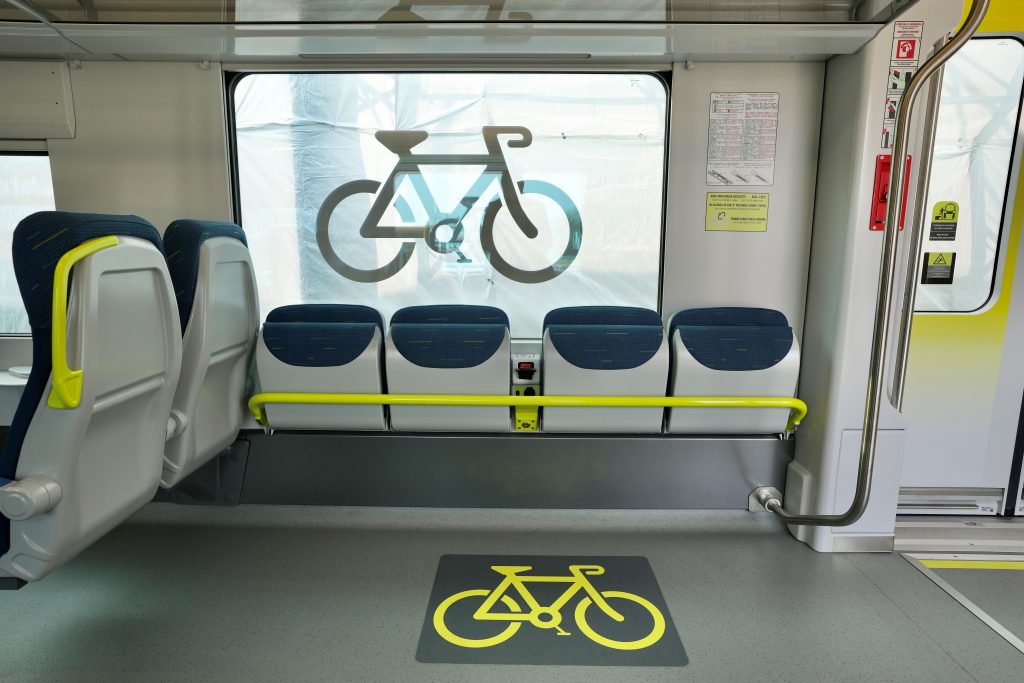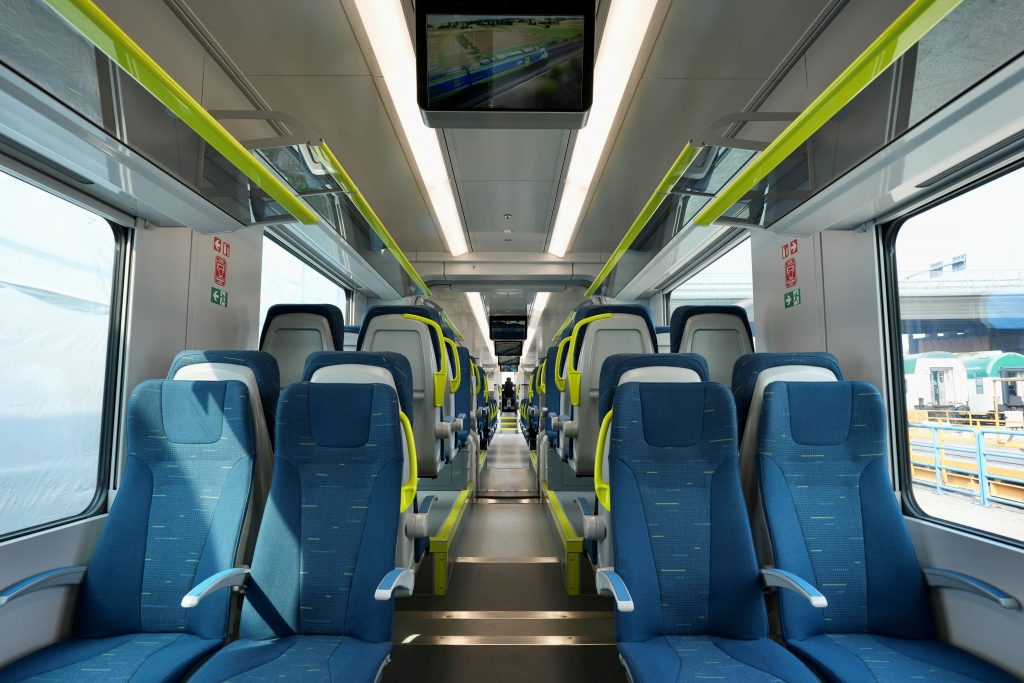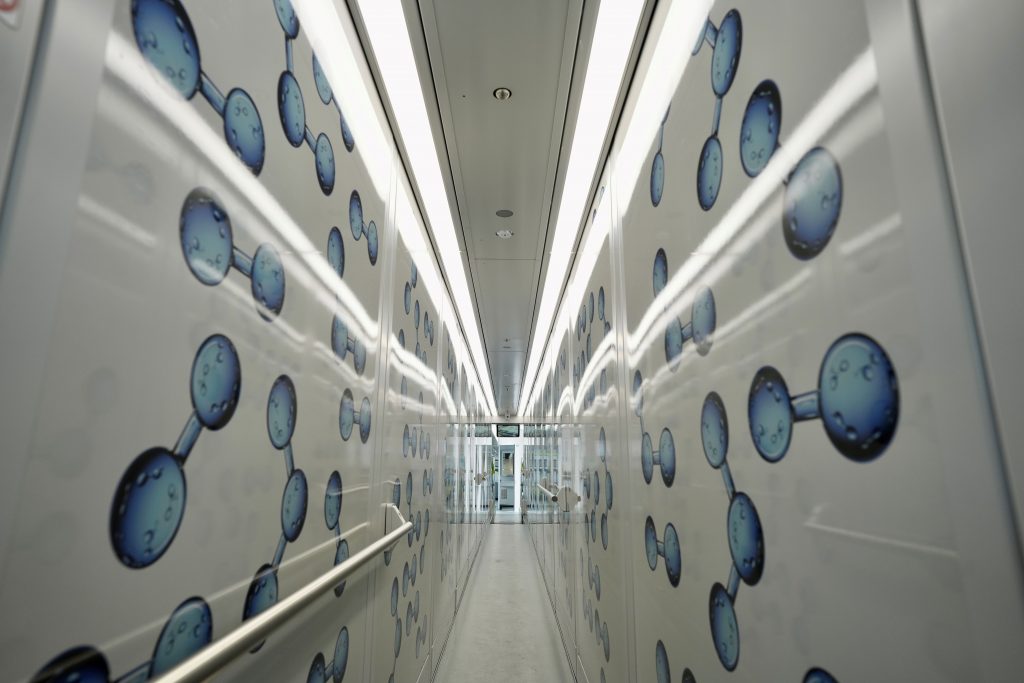A train departs from Brescia, silently reflects on Lake Iseo and then passes through the houses and mountains of the Camonica Valley, leaving the landscape clean, no trail of black smoke but a watery vapour, a sign of the energy that is setting it in motion. This is the scenario which is expected to take place between the end of 2024 and the beginning of 2025, when the Coradia Stream, Italy's first hydrogen train with zero direct CO2 emissions into the environment, will replace diesel trains on the non-electrified Brescia-Iseo-Edolo railway line. The first of six trains commissioned by Trenord and Ferrovie Nord Milano to Alstom, it will have a range of 600 kilometres and will accommodate 260 seats; it will be part of the 'H2iseO' project, Italy's first hydrogen valley, which will contribute to the carbon neutrality target set for 2050 by the European Union, ie a 100% reduction in CO2 emissions, as much as it produces. Putting this hydrogen train and the innovation it brings into motion is Alumna Susanna Boitano, who was the Train Control Engineer, the person responsible for the software development of the vehicle's Train Control Management System (TCMS). ‘It is the brain of the convoy,’ she says, ‘which communicates with all the software of the on-board subsystems’.

Tell us more about how this brain works.
The energy is produced by the fuel cells on the train roof and stored into high-voltage lithium batteries. The tanks containing the hydrogen are distributed in the Power car, the one housing this energy heart. Industrial piping systems communicate with fuel cells where the chemical transformation of the combination of hydrogen, oxygen and waste water takes place. The energy is then stored in high-voltage batteries, communicating with the traction motors and auxiliary units that take the energy and distribute it to the rest of the train. Where possible, hydrogen fuel consumption is limited as much as possible thanks to the control of the Energy Management system. The batteries are charged both by the hydrogen production of the fuel cells and by the driver's electrodynamic braking, which means that no energy is wasted when braking. Part of the software I dealt with checks whether the high-voltage batteries should be recharged through hydrogen conversion by fuel cells or through braking energy recovery,
So the train is totally green, right?
Yes, because hydrogen in contact with oxygen in the air generates energy via fuel cells and releases water. Hydrogen is stored in facilities paid for by the customer, in this case Trenord and Ferrovie Nord Milano, which have declared that they will be supplied from renewable sources in order to maintain the circle of environmental sustainability. The feasibility plan is currently being finalised and envisages the initial use of Steam Methane Reforming (SMR) technology, from methane or biomethane, with capture and storage of the generated CO2, for the production of 'blue hydrogen'. Our goal is to deliver the first train between the end of 2024 and the beginning of 2025.
What was it like to come on board for the first time?
First, I would like to point out that the tests are still ongoing. This being said, the design has taken many years of work - and I mean not only from the aesthetics, but also from the mechanical and software points of view - but the real satisfaction comes when the train is complete, as a whole, and you turn the key and switch it on for the first time. The first turn of the key is the moment when you say to yourself: ‘this is what all these years have led to’.
What have they lead to exactly?
To the first hydrogen train in Italy. Well, as a matter of fact, also at European level, because currently the only other hydrogen train is the iLint, also produced by Alstom, for Germany, but designed for a limited commercial service and based on different network technologies. This one, on the other hand, is the first hydrogen-powered Smart Coradia model, which is part of the same group of regional trains that is replacing the entire fleet of Italian regional monoplane trains. Working for it was a privilege, because I felt like I was making a contribution to my country.
Marco Piuri, CEO of Trenord and Managing Director of FNM, said: ‘Inaugurating the use of this technology in an area that connects, by vocation, means that its value will not only be realised in the individual project, but will spread to other areas. I am thinking of industries and services that can be reached by the hydrogen network. This is what we aim to achieve with H2iseO: we want it to be scalable, beyond rail and bus mobility'. What is the future of hydrogen?
In an increasingly environmentally conscious world, I think it is crucial to look for alternative ways of producing energy. A diesel-powered train emits CO2, approximately 0.044 kg CO2 per km. In Italy, 40% of routes are not electrified and electrification is sometimes much more expensive than buying a diesel train. Moreover, the landscape is often difficult due to mountains, forests or, as in the case of Brescia-Iseo-Edolo, the tracks passing between houses in tunnels of limited size. Hydrogen could also be an intelligent application in metallurgical industries that currently have huge energy consumption.
On which tracks will the hydrogen train then lead us?
It will surely lead us to a future where we will be more aware and attentive to even the smallest things. Sometimes it takes a big message and a big change to let the individual become aware. The strong impetus towards collective innovation can have an impact on the choices we all make, every day, individually.
Will you board the hydrogen train for one of your first trips?
Of course! I will organise a trip with my family to show them what I have actually been working on all this time.





